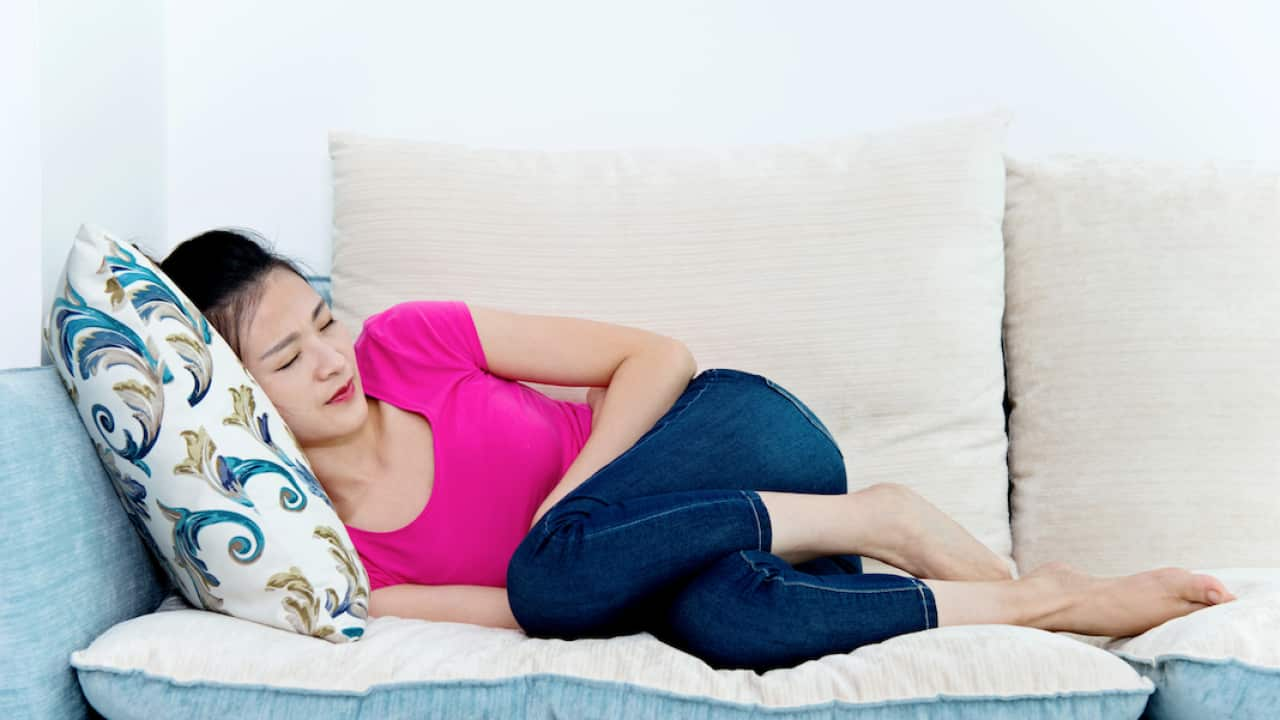Period pain, a source of monthly discomfort for millions of women across the globe, is a female experience as old as procreation and fertility itself.
But long before Dr Google or ibuprofen ever existed as treatments to ease the pain, dysmenorrhea (menstrual cramps) was often managed using traditional techniques and ancient tinctures.
Here are just some of the ways women treated their period pain before Western medicine.
1. Menstrual blood
In many ancient cultures, menstruation was considered to be , bearing connections to the moon. According to , a Mesopotamian mother goddess would cast a conception spell by painting living clay dolls with their menstrual blood.
Although this tale may sound extreme, some still practice rituals that involve painting the body with menstrual blood – as viewers see in SBS’s new series Medicine or Myth.
Yazmina (26), who appears in episode one of the show, says she follows an shamanic womb healing ritual and uses her own menstrual blood to calm her period pain.
“Every month I create a ritual meditation space and I use my [menstrual] blood in a way to connect, either through putting it on my hand or anointing it on my third eye [painting the blood on my face],” Yazmina tells SBS.
“I then put one hand on my heart, one hand on my womb so I’m connecting those spaces, and just breathing into the body.”
Yazmina is adamant the ritual reduces her cramping. But the Shamanic ritual lacks formal evidence and doesn’t get much attention from the show’s panel of medical experts.
2. Mizan massage
Mizan is an Arabic word that means balance. So too it follows that Mizan is , with links to Arabic, Moroccan and South American cultures, that uses external abdominal massage techniques to restore balance to the uterus.
Sydney-based mizan therapist and TCM practitioner, Naseema Haffejee, says that Mizan massage may heal cramping if your uterus is not in its correct position.
“The knock-on effect is that you may have period pain because the blood is not going to flow properly,” Haffejee tells SBS. “When you massage the abdominal area, you allow for oxygen to get to the area as well. Where there’s oxygen, there’s cellular regeneration.”
3. Smoking moxa boxes
Moxibustion is a popular treatment for period pain hailing from the ancient realms of Traditional Chinese Medicine (TCM), which dates back . Still used in TCM practices today, it’s conducted by burning a dried stick of mugwort (called moxa) and waving it over a woman’s pelvic area. The moxa stick can also be placed inside a wooden moxa box, although some practitioners just use the stick on its own.
The idea behind the ritual is to allow the heat from the stick to draw blood to the skin’s surface and alleviate cramping.
A therapy with a heating box was effective for alleviating menstrual pain and symptoms due to heat stimulation. But more research into the TCM remedy is needed.
4. Hydrotherapy
Associate director of research at and PhD candidate at UTS, Rebecca Reid tells SBS that hydrotherapy has always been a popular non-pharmacological treatment in Germany.
“Having has a long history in Europe,” says Reid, a research fellow of the International Naturopathy Research Leadership Program at UTS.
“A sitz bath is about the size of a baby’s tub. You sit in it and fill it with warm water up to your hips.
The shallow water cleanses the perineum and does a similar thing for period pain as the moxsa box: “it increases the blood flow in the skin by helping to heat the pelvic area”.
Reid says in Australia, doctors may just recommend you have a warm bath with salts to ease muscle pain of any sort. But for those among you who are determined to bathe in a traditional style, sitz bath kits which attach to the toilet are available at some chemists.
5. Botanical remedies
Naturopathy and homeopathy suggests many botanical remedies for period pain, based on ancient and traditional herbal wisdoms.
Reid explains that although black cohosh is often used in botanical medicine to manage menopause in women,
(Vitex agnus-castus) is another common recommendation. It derives from a Mediterranean plant whose extract is said to relieve menstrual cramping. “It works to balance the sex hormones – oestrogen and progesterone – and reduce prolactin to regulate a woman’s cycle,” she says.
This article contains general information only and does not recommend or endorse any particular treatment. It is not intended to replace the advice provided by your own doctor or medical or health professional.
Are alternative remedies simply a myth or do they have a place alongside modern medicine? Medicine or Myth? follows everyday Australians as they pitch their diverse and sometimes divisive health remedies to a panel of medical experts, led by Dr Charlie Teo, in the hope of being selected for a real-world trial.
#MedicineorMyth, an eight-week series, airs every Monday at 8.30 pm on SBS, or catch up anytime on SBS On Demand.



